When registering Microsoft Authenticator as a two-factor authentication method, some users see Microsoft Authenticator Registration has timed out error. Let us see how to fix this issue.
Authenticator registration has timed out. Please choose “Next” to try again.
The error message also contains details like Correlation ID and Timestamp, which you can copy and share with your organization or admin.
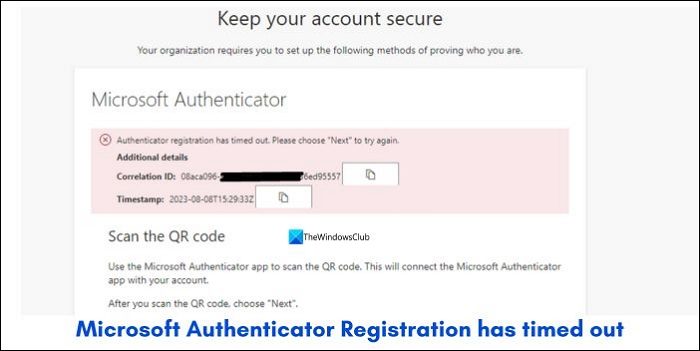
Microsoft Authenticator is one of the best two-factor authentication applications available currently. You can use it on third-party services to protect your accounts. To start using the Microsoft Authenticator on your accounts, you need to download and use the app.
Microsoft Authenticator Registration has timed out
When you see Microsoft Authenticator Registration has timed out error, you can fix it in the following ways.
- Check your internet connection
- Disable VPN
- Make sure you are not blocked
- Make sure your device is encrypted
- Try in Incognito mode
- Connect a Microsoft Account and try
- Contact your admin or Microsoft Support
Let’s see how to use them to get rid of the error.
1] Check your internet connection
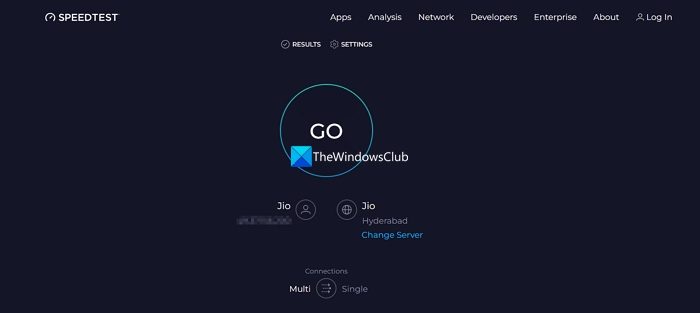
Microsoft Authenticator relies on the internet to set up the account. You need to ensure you have a reliable internet connection on both your PC and the phone on which you use Microsoft Authenticator. If you are connected to mobile data on your phone, try switching it to WiFi or vice versa. Similarly, make sure the internet on your PC is working fine by running a speed test. If you find any issues with the internet, fix them and try registering on Microsoft Authenticator again.
2] Disable VPN
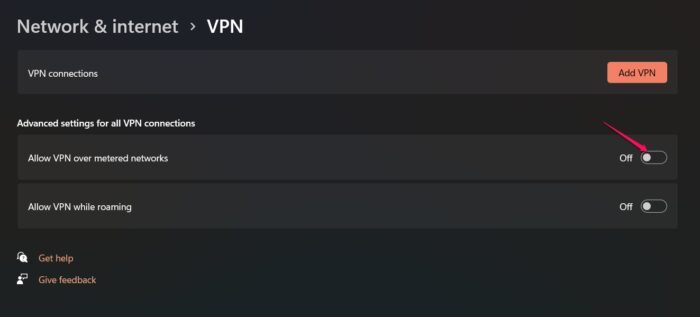
If you are connected to the internet via a VPN, the error might have been caused by it. When you connect to the internet via a VPN, the internet speeds decrease. Some servers have a heavy user load, and many connect to the same server. The heavy load causes slow internet speeds, which may hamper your registration on the Microsoft Authenticator app. Disable your VPN on both your devices and try again. Connect your devices to the same network or server to match the IP addresses and try again.
Read: Fix Internet gets disconnected when VPN connects
3] Make sure you are not blocked
If you are registering Microsoft Authenticator for your organization account, the administrator might have blocked you due to suspicious activity. Contact the administrator of your organization and make sure you are not blocked. If you are already blocked, they can unblock you and make it easy for you to register Microsoft Authenticator.
Also read: Microsoft Authenticator: We’re sorry we ran into a problem
4] Make sure your device is encrypted
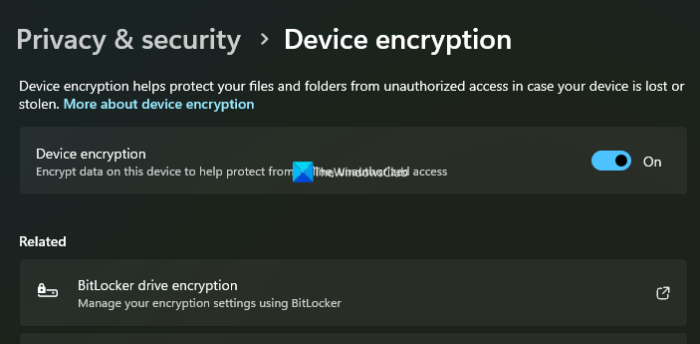
When the devices you use to register Microsoft Authenticator are not encrypted, they are open for unauthorized access. The devices are potentially risky for the organization’s accounts. You may face the registration timed-out error in such cases too. It would be best if you made sure both your Windows PC and the mobile device are encrypted.
To make sure Windows 11 is encrypted,
- Open the Settings app
- Click on Privacy & security
- Select the Device encryption tab
- Make sure the toggle button beside the Device encryption is turned on. If not, toggle it on to enable Device encryption.
Coming to your mobile device, if you are using an Android or iOS device, they are by default encrypted. You need not make any changes. If you have rooted your Android device and installed a custom or open-source operating system, then you need to switch to an encrypted device.
Read: Difference between Device Encryption and BitLocker
5] Try in Incognito mode
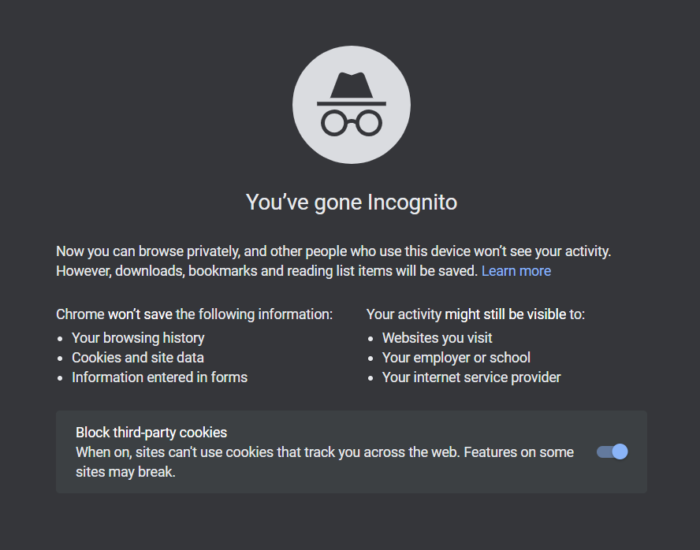
If you are trying to register Microsoft Authenticator on a normal tab, try using it in incognito mode without any extensions. As incognito mode comes without cookies, cached data, etc. it can help you get rid of the error and help in registering two-factor authentication successfully.
6] Connect a Microsoft Account and try
If you are using the Microsoft Authenticator app without logging in with a Microsoft account, sign in with a Microsoft account and try registering the account again for two-factor authentication. Signing in with a Microsoft account also has the benefit of backing up the accounts and their codes automatically. It would be better if you use the Microsoft account provided by your organization for security purposes.
7] Contact your admin or Microsoft Support
If the issue is not yet fixed, you might have to contact your organization administrator regarding the same. Even if they cannot fix the issue, you should contact Microsoft Support. They will find out the reason for the error and guide you in fixing it.
Also read: Fix Microsoft Authenticator app is not displaying code
How do I fix Microsoft authentication problem?
If you are facing issues with Microsoft authentication, make sure your device notifications are turned on and you have logged in with the correct Microsoft account to ensure all the accounts and their codes are securely transferred to the new device if you have changed it. If you have recently deactivated any account and activated it again, two-factor authentication is disabled by default. If you have accidentally deleted an account from Microsoft Authenticator, you should use the backup codes of the particular account and reset the two-factor authentication.
Why can’t I get into my Microsoft Authenticator app?
Microsoft Authenticator app can be used without any account. You can install it on your device and add accounts to enable two-factor authentication by scanning the QR codes. If you change the device, you have to backup the codes and accounts to a Microsoft account by logging in to the app. Install the Microsoft Authenticator on a new device and log in with the Microsoft account you have backed up the codes and accounts to. If you are facing issues with PIN or biometrics, make sure you have the latest version of the app, and biometrics enabled on your device.
Related read: Microsoft not sending verification code SMS text.